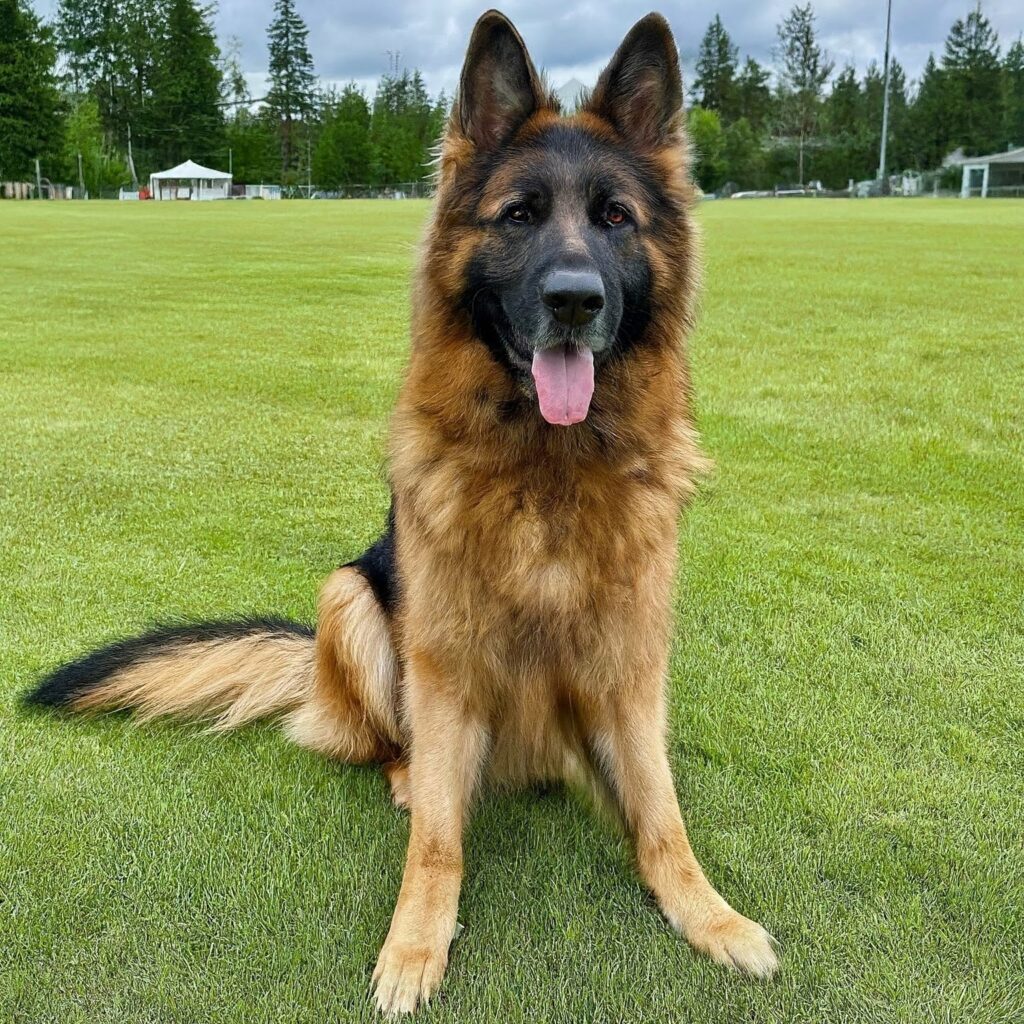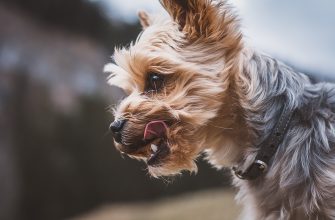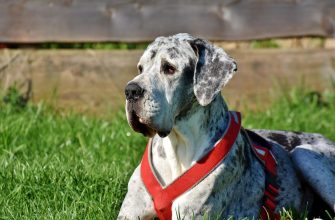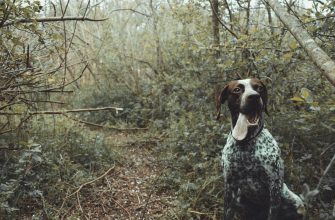Introduction to German Shepherd Muzzles
Muzzles designed for German Shepherds have evolved significantly over the years. Initially, these tools were basic, focusing only on functionality without much consideration for comfort or the specific needs of German Shepherds.
Today, manufacturers design muzzles that not only meet safety standards but also ensure comfort for the dog.
I find that the primary purpose of these dog muzzles extends beyond simple restraint. They serve crucial roles in training regimes, public safety, and behavior management.
For instance, during my visits to crowded places or when using public transport, I’ve noticed that a well-fitted muzzle can prevent accidents and help manage a dog’s impulse to bite or bark excessively.
Best German Shepherd Muzzles
| Image | Price | Buy | Title |
|---|---|---|---|
 TopTop TopTop | Buy Now | BASKERVILLE ULTRA MUZZLE - Patented Humane Design, Breathable, Dog can Pant and Drink, Adjustable, Padded, Training Muzzle for Medium-sized Dogs, Prevents Biting, Wildlife Scavenging (Size 3, Black) | |
 TopTop TopTop | Buy Now | BARKLESS Dog Muzzle, Basket Muzzle for Biting, Chewing and Scavenging, Humane Cage Mouth Cover, Perfect for Grooming and Training Medium, Large Aggressive Reactive Dogs | |
 TopTop TopTop | Buy Now | HEELE Dog Muzzle,Soft Nylon Muzzle Anti Biting Barking Chewing,Air Mesh Breathable Drinkable Adjustable Loop Pets Muzzle for Small Medium Large Dogs 4 Colors 4 Sizes | |
 | Buy Now | BRONZEDOG Wire Dog Muzzle German Shepherd for Medium Large Dogs Adjustable Durable Metal Basket for Biting Chewing Barking (L) | |
 Top Top | Buy Now | Dog Muzzle, Breathable Basket Muzzles for Small, Medium, Large and X-Large Dogs, Stop Biting, Barking and Chewing, Best for Aggressive Dogs (Large, Black) | |
 | Buy Now | German Shepherd Dog Muzzle Metal Basket for Medium Large Dogs Adjustable Durable Leather Straps Secure Wire Mask for Biting Chewing Barking (Black, M - Size) |
As an Amazon Associate, we earn from qualifying purchases.
Types of German Shepherd Muzzles
There are three main types of muzzles used for German Shepherds: leather, metal, and basket muzzles. Each type has its own set of advantages.
Leather muzzles are soft and less intimidating to the dog. They are suitable for short-term use such as during vet visits or for dogs that do not require a strong restraint.
However, they are not ideal for long durations as they restrict panting, which is necessary for a dog’s thermal regulation.
Metal muzzles are more robust and provide maximum security. I recommend them for dogs that might exhibit aggressive behavior or for use in high-stress situations.
Their sturdy design prevents biting, but they can be heavy and uncomfortable for the dog if not properly padded.
Basket muzzles are the most versatile. Made from a variety of materials, including rubber, plastic, or wire, these muzzles allow a dog to pant, drink, and even eat small treats.
This type is my go-to for longer periods, especially during training sessions, as it balances safety with comfort.
In summary, understanding these different types and their applications can significantly enhance the experience of both the dog and the handler. Choosing the right type depends on the specific needs and activities of the German Shepherd.
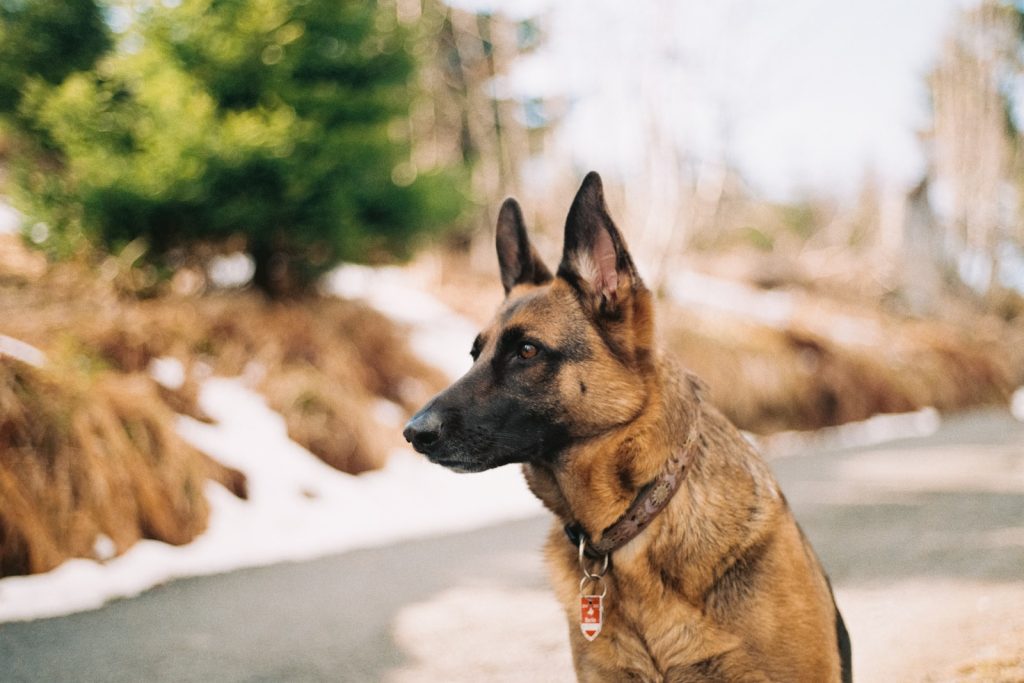
Purposes of Using Muzzles for German Shepherds
Muzzles play several crucial roles for German Shepherds. They enhance safety in public spaces and during transport.
A muzzle can prevent potentially dangerous interactions if a dog feels threatened or simply overwhelmed.
This use is essential in crowded areas or on public transport where close proximity to strangers can cause stress in dogs.
Another important use of muzzles is in training. Specifically, they are invaluable in obedience training. A muzzle keeps a training session safe and focused, especially when a German Shepherd is learning to manage its reactions.
Similarly, during agitation training, which prepares a dog for protective services, a muzzle ensures the safety of the trainer and the dog while it learns to respond to threats.

Training with Muzzles
Integrating muzzles into training sessions requires careful consideration and technique. When I use muzzles for obedience training, I focus on positive reinforcement.
This approach helps the dog associate the muzzle with a positive experience rather than punishment. For example, rewarding calm behavior while wearing a muzzle can reinforce that calmness is beneficial.
In agitation training, a muzzle is necessary to safely simulate attack scenarios. This training helps a dog learn to manage its instincts and forces it to focus on non-bite-related strategies.
It’s crucial during these sessions to ensure the muzzle fits well and allows the dog adequate ventilation, especially under physical stress.
Positive reinforcement plays a vital role here as well. After sessions, providing rewards and comfort helps the dog understand that the muzzle is part of its role, not discomfort.
This method strengthens the bond between the dog and the trainer and maintains the dog’s trust and willingness to participate in training.
Choosing the Right Muzzle
Selecting the right muzzle for a German Shepherd is crucial. The correct size and fit ensure the muzzle is effective without causing discomfort to the dog.
I always suggest measuring the dog’s snout and neck accurately before purchasing a muzzle. A well-fitted muzzle will be snug enough to stay in place but loose enough to allow the dog to pant and breathe without restriction.
When considering features, breathability and visibility are key. The muzzle should allow ample airflow and not obstruct the dog’s vision.
Easy-to-clean materials are a plus, especially if the muzzle will be used frequently. For dogs that spend time outdoors, I look for durable materials that can withstand various weather conditions.
Acclimatizing a dog to a muzzle involves patience. Introducing the muzzle in a calm, positive manner can make a significant difference in how the dog perceives it.
Brief periods of wear followed by rewards can help the dog associate the muzzle with positive experiences.

Special Considerations
Using muzzles in cold weather requires special attention. Materials that provide insulation while still allowing breathability are ideal.
Some muzzles come with covers that protect the dog from cold air, which can be particularly useful during winter walks.
Muzzle vests are another option worth considering. They are less intrusive than traditional muzzles and can be a good alternative for dogs that are minimally aggressive or anxious.
These vests often integrate a muzzle into a harness-like design, providing comfort and security without the full restraint of a muzzle.
For purchasing, I explore both online shops and local pet stores. Online retailers often provide a broader range of options and sizes, which can be helpful when looking for something very specific.
However, local pet stores offer the advantage of seeing the product in person and sometimes trying it on the dog to ensure a good fit.
Understanding these nuances can greatly aid in making an informed decision about the best muzzle for a German Shepherd, tailored to the dog’s specific needs and activities.








